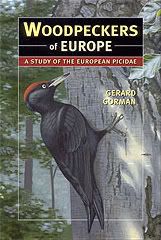Friday, 14 September 2007
White-backed Woodpecker: lilfordi race general ID
The general features described elsewhere in this blog for nominate leucotos apply equally to the southern European race lilfordi. However, there are some striking and important differences in plumage that together with wing and bill measurements, voice, habitat selection and distribution, have resulted in this race sometimes being considered a separate species i.e. Lilford’s Woodpecker. Lilfordi is slightly larger, overall darker and more heavily streaked with long, black, flecks on the flanks, breast and belly. In addition to vertical streaks there are also some horizontal bars on the flanks that nominate lacks. The pink ventral area extends further up onto the belly than leucotos, often onto the lower breast. Under-parts various shades of white, cream, often dusky or tinged buff and always more marked and darker than leucotos. The forehead, lores, cheeks and throat are also more yellow. The black post-auricular stripe and malar stripe are broader and, where they join to form a T-junction, below the ear-coverts, a larger black area is formed. Face patterns may vary slightly from bird to bird but on all the post-auricular stripe runs over the ear-coverts and finishes much closer to, or even touches, the nape. On leucotos it never touches the nape and a wider white gap is clear. Wings have narrower white bars than on nominate. But above all lilfordi lacks the clear white lower-back and upper rump patch of leucotos race. Lilfordi is thus less "white-backed" than leucotos. It is rather "barred-backed" or perhaps "ladder-backed" due to the white-back and upper-rump being vermiculated with black. The rump of this race often seems totally black.
Subscribe to:
Post Comments (Atom)





No comments:
Post a Comment